Emily and I have both been wearing the Altra Lone Peak 4 Mid RSM (rain-snow-mud) as our primary hiking boot since March 2019. In that time we’ve trail-tested well over 150 miles on these boots and had time to reflect on their quality, comfort, and performance. We purchased them with our own money.
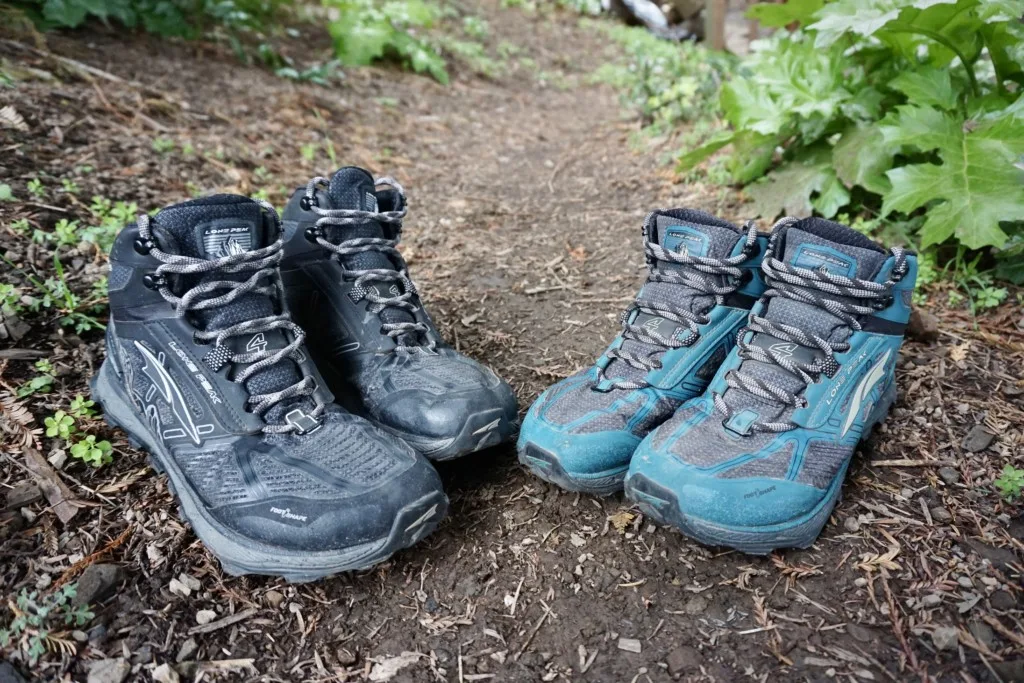
The Lone Peak Mid is a kind of hybrid between a trail runner and a minimalist mid hiking boot. The RSM (rain-snow-mud) version is the waterproof version. They also sell a mesh version that isn’t waterproof.
Altra began as a running shoe company, so the move into hiking boots was always a bit of a side venture for them. As people began to see value in using Altras for hiking, the company expanded into this new space.
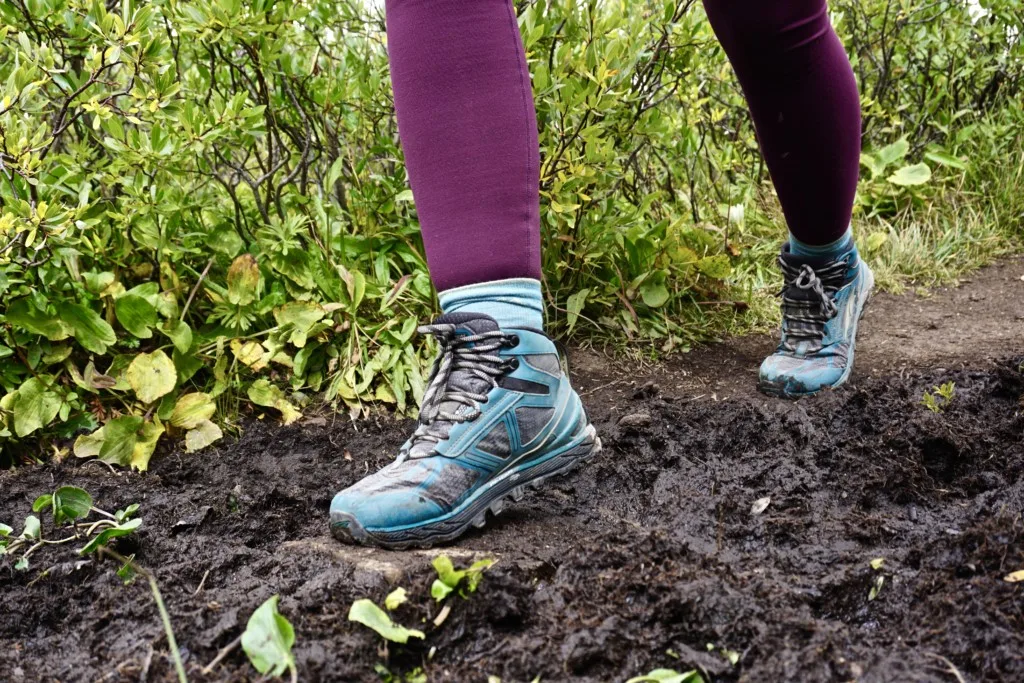
This post may contain affiliate links. Disclosure policy.
And move towards hiking footwear has been a successful one, as Altra has become a very popular brand for hikers, especially thru-hikers. The Lone Peak Mid has gone through several iterations and has nearly always had mixed reviews, which is somewhat par for the course because everyone’s feet are different.
I personally love them, but they are not without faults or shortfalls.
Check Price on REI: Men’s | Women’s
Check Price on Amazon: Men’s | Women’s
What is Altra?
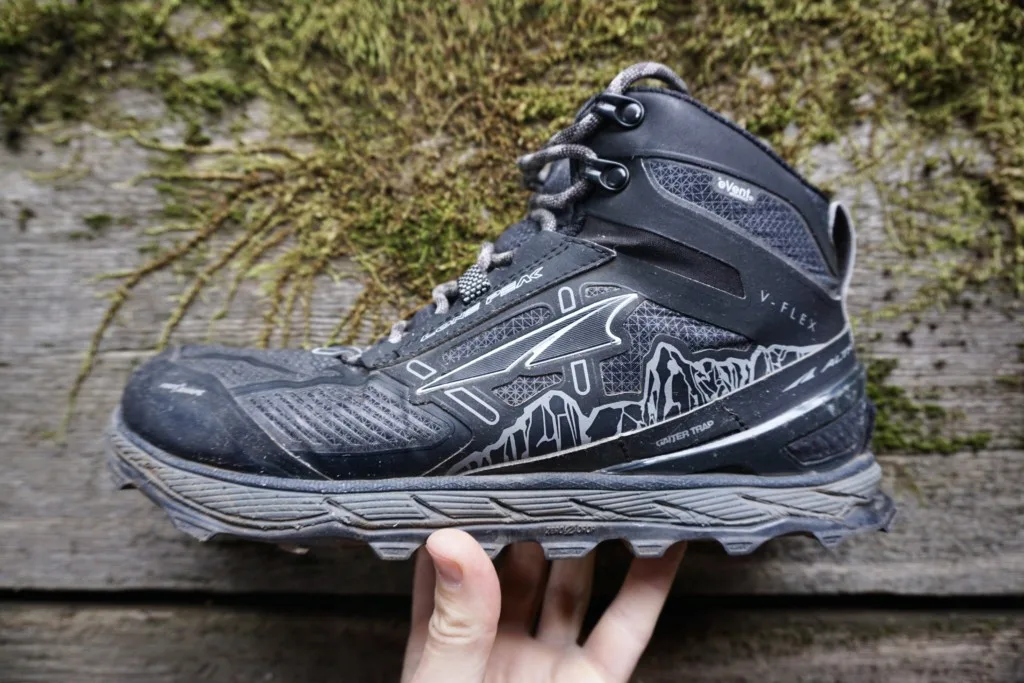
To give a little background, Altra is a relatively new shoe company (2009) that was created by runners. They were born out of the desire to break away from what all the other giant shoe companies were doing.
Wide Toe Box
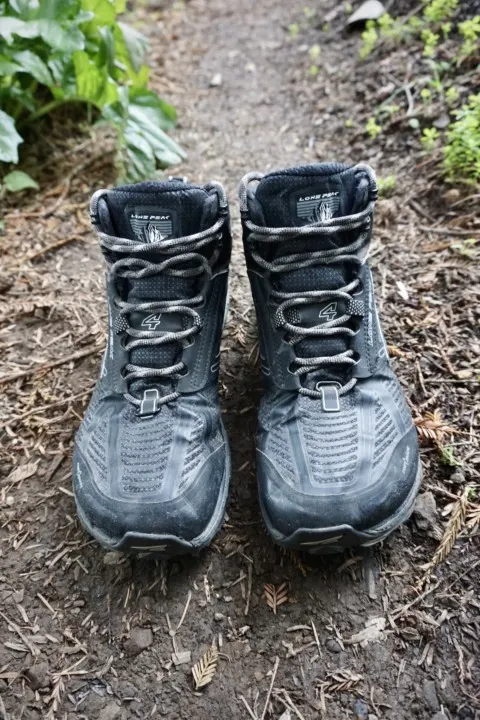
The first big difference is a wide toe box, that Altra calls Foot Shape™. Unlike most shoes, Altras don’t get any narrower from the ball of the foot forward. The purpose of the boxy, wide toe box is to more closely mimic the natural shape of a human foot. During step-off, our toes are the widest part of the foot, so the wide toe box allows the toes to splay out naturally. This helps feet to experience less discomfort and also provides a more stable contact area with the ground.
Zero Drop Cushion
The other big innovation is a “Zero Drop” balanced cushion. It means that the cushion under the foot, or stack height, is the same thickness everywhere. A traditional running shoe has a much thicker cushion under the heel. The reasoning behind a thick heel was to cushion the impact and provide a forward tilt.
But Altra believes that thicker heel cushions are treating the symptom and not the problem. They believe that a natural running gait is the mid-foot striking the ground first, rather than striking with the heel first and rolling forward to the toes.
A Zero Drop cushion allows runners to employ this more natural gait. Although most of Altra’s shoes are designed with minimal cushion, Zero Drop does not necessarily mean that there is minimal cushion. Even a shoe with a huge stack height can be “Zero-Drop” just as long as the stack height is the same throughout the length of the shoe.
Okay, so how do these well-intentioned goals translate to the real world in the Lone Peak 4 Mid RSM. Let’s break down whether these design features, like Foot Shape™ and Zero Drop are the real deal, or just gimmicks.
For the Stats Junkies
Weight = 12.9oz | 366g
Insole = 5mm
Stack Height = 25mm
Features | Altra Lone Peak 4
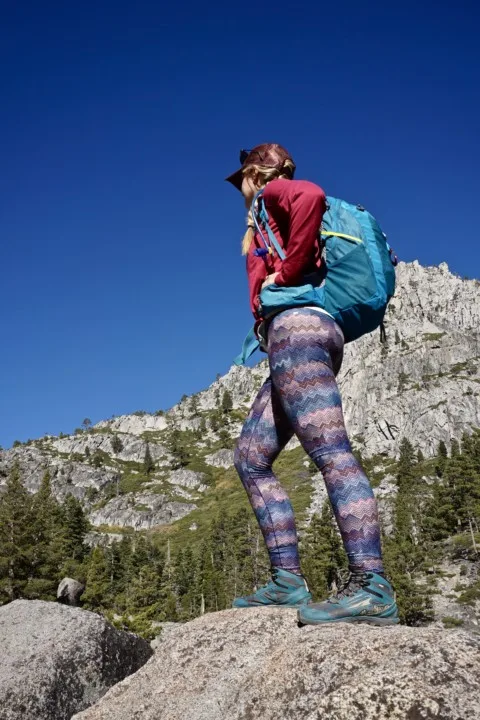
Weight
They are extremely light for a waterproof mid-height boot. They’re only a couple ounces heavier than a traditional running shoe.
So any evaluation of the Lone Peak 4 should pay fair respect to their ultralight status.
From my own measurements:
Men’s size 9.5 (one) = 13.3oz | 377.5g
Women’s size 6.5 (one) = 10.5oz | 298g
Comfort
They are wildly comfortable because the shoe is soft and malleable like a shoe, rather than a traditional rigid hiking boot. I, along with many others, find that the Lone Peak Mid doesn’t cause blisters or hot spots. The only comfort complaints have to do with the minimal protection from rough terrain. They are equipped with a “Stone Guard” layer to lessen the impact of bumps.
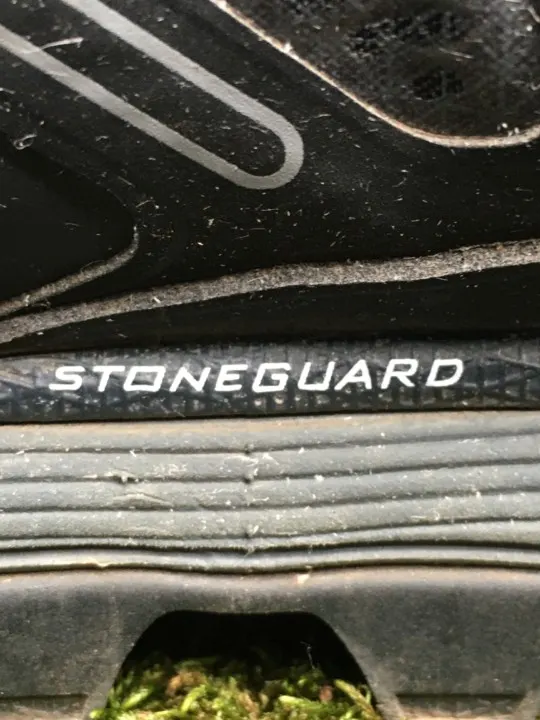
But to be clear, if you step on or kick a sharp rock or root, you will feel it. So these boots can lead to sore feet after lots of rough terrain. When I wear them on rough trails, I will pay special attention to where my feet land.
Warmth
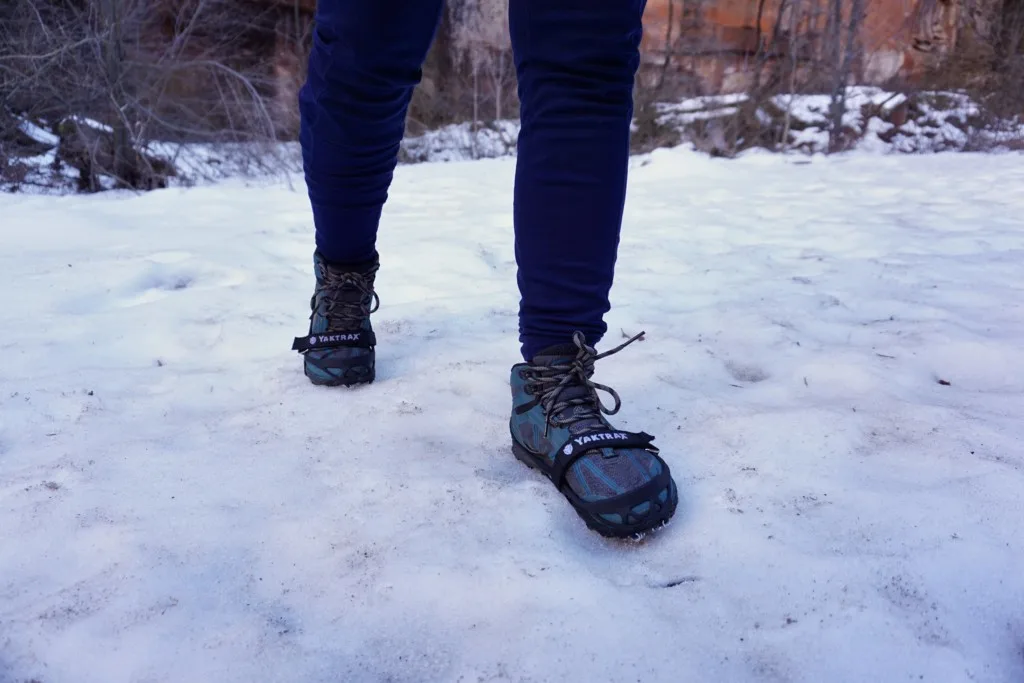
The “eVent” waterproof upper is somewhat breathable but definitely makes these boots run hot. I do not enjoy using them in temps above 70F.
And conversely, they aren’t especially well insulated for cold weather.
I’ve done a fair amount of mild winter hiking on packed snow with these, and they work superbly. But I wouldn’t trust them to keep my feet warm in any temps below 35F.
Also just as a side note, when used in tandem with Yaktrax, the material isn’t firm enough to hold it’s shape. So the toe of the boot collapses a little bit. It’s not a huge deal, but still worth mentioning.
Traction
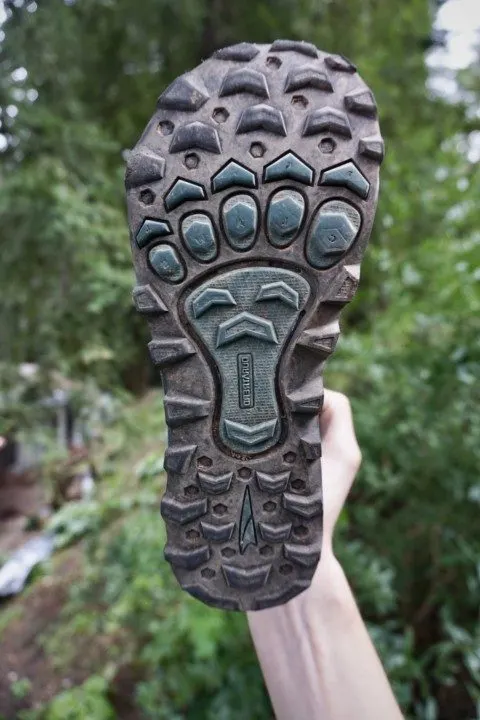
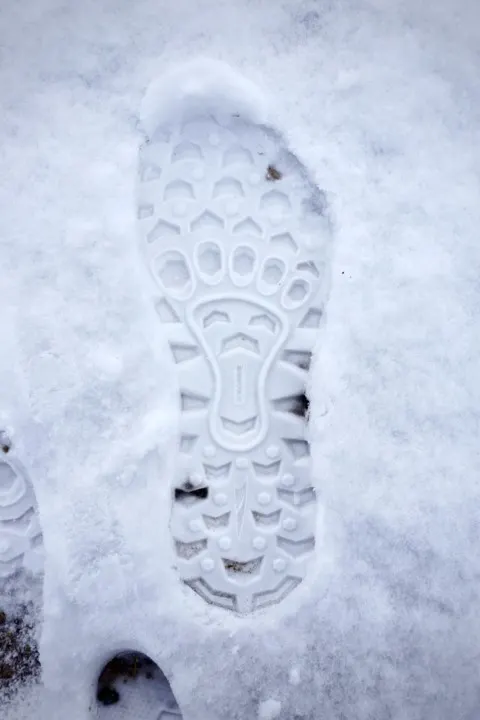
The Trail Claw™ soles on the Lone Peaks are superb. We have used them on all kinds of sandy, slippery, and off-camber terrain. The traction is one of the best features of the shoe.
I have basically trusted my life to the traction of the Lone Peaks when hiking along large cliffs. The footing has rarely ever slid out on me.
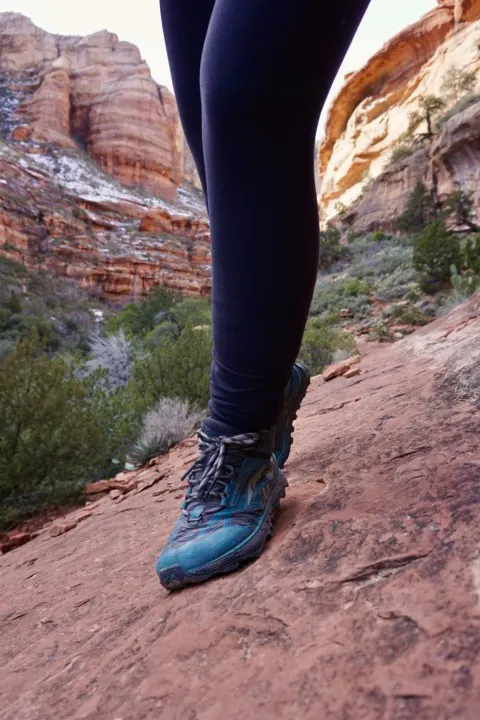
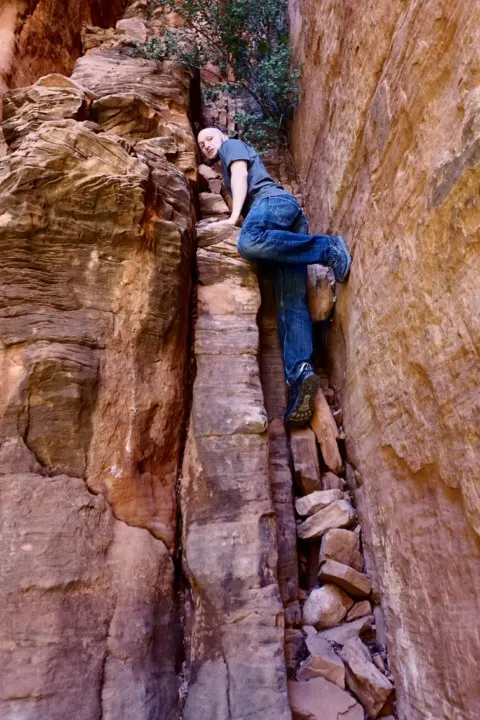
Durability
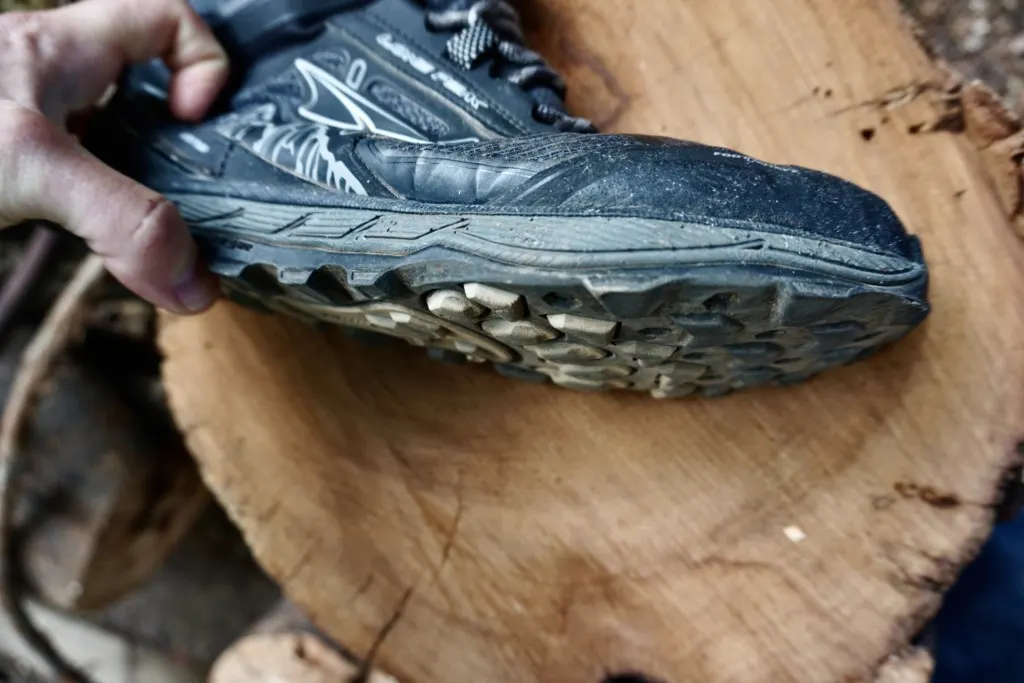
The lightweight “shoe-like” material of the Altra Lone Peak 4, of course, comes with a trade-off. When compared to a traditional sturdy hiking boot, the Lone Peak will wear out faster.
They do market the shoes as having Duratread™, a supposedly durable rubber outsole. And I have been impressed with the durability of the tread on these shoes.
It was one of the advertised improvement over the previous models 3.0 and 3.5. This is what the bottom of the shoes look like after a year of moderate use.
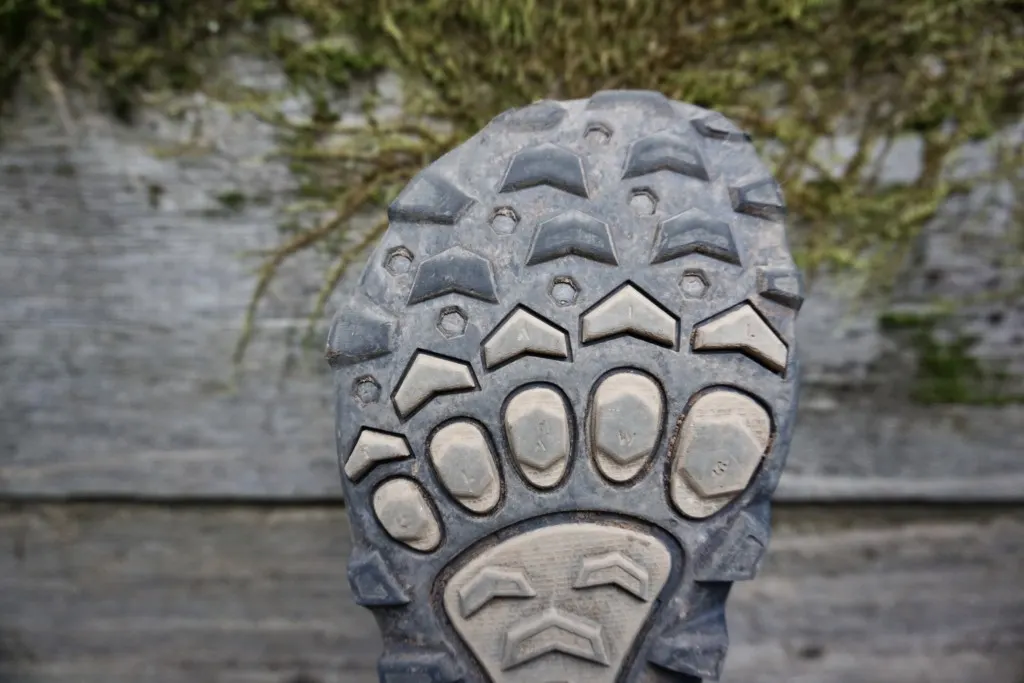
The lugs aren’t as “sharp” as day 1, obviously. But they have maintained most of their height, which you can verify because the engraved letters “T-R-A-I-L C-L-A-W-S” are still mostly visible.
And in terms of traction, no difference is noticeable yet. Altra’s attempt to make the tread more durable on this iteration of the shoe seems to be successful.
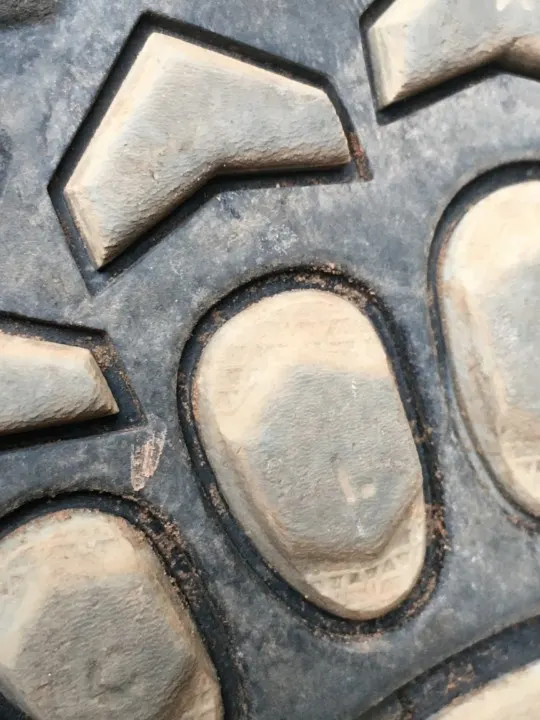
Waterproofing
Let me preface by saying that waterproof shoes are usually closer to water-resistant that truly waterproof. No matter the brand, even “waterproof” Gore-Tex can be compromised by moisture eventually.
Any water deeper than your ankle, sweating, and degradation of materials will eventually defeat any “waterproof” shoe.
The Altra Lone Peak 4 is no different, and you should only regard their “waterproof” claims to mean closer to water resistant. The waterproofing holds up well against light rain, dew on grass, and intermittent stream crossings (as long as it’s shallower than the ankle opening).
A common complaint about the Lone Peak 4, specifically, is that the waterproof coating abrades off too easily. But neither Emily nor I have noticed this kind of degradation, yet. [ Jan. 2021 Update: We have both noticed the waterproof coating has worn away right at the primary flex points of the shoe. ]
Quality
The workmanship of these boots is solid. I wouldn’t say that they’re indestructible, but so far they have held up well through all kinds of hiking. We have put over 150 miles on these boots and the materials are holding up nicely.
The traction on the soles shows minimal wear, and the mid and upper are only showing mild scuffing. The waterproofing is still mostly intact.
[ Jan 2021 Update: Well over 300 miles on these boots now. – The toe cap on one of my boots has separated further, but it hasn’t compromised the shoe yet. (I plan on trying to glue it). The toe caps on Emily’s boot have also begun to detach, but again not catastrophic failure. This is a common issue with these boots. And the waterproofing on both of our pairs has begun to tear right at the widest part of our feet (the primary flex spot on the shoe). We have used these boots for all kinds rocky hikes, which abrades the outer layer quickly. ]
Ground Feel
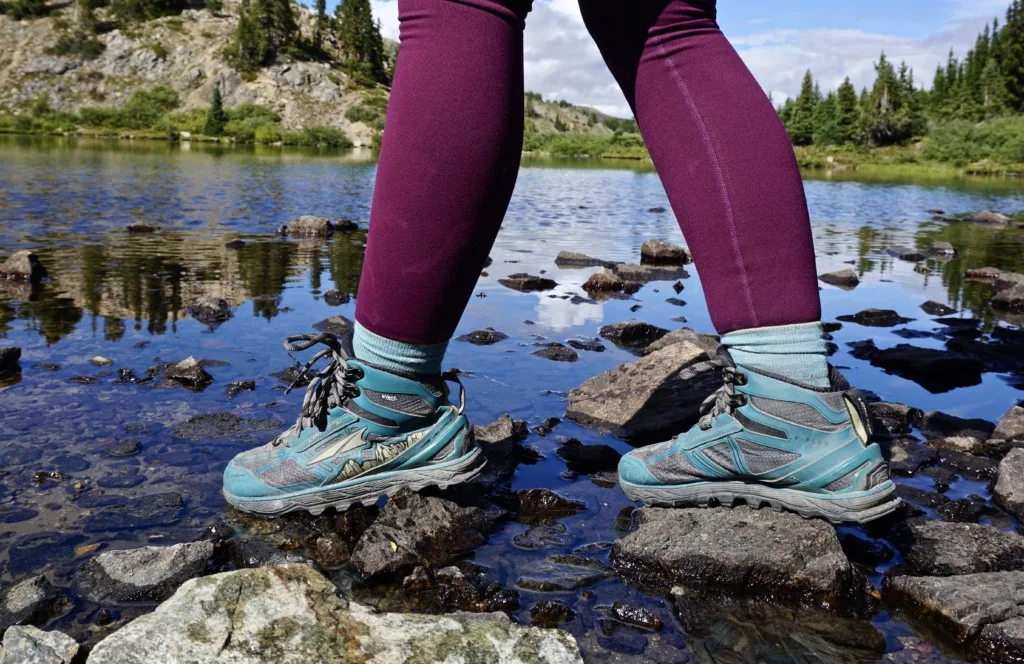
The Altra Lone Peak 4 has a relatively low stack height (25mm). The result is a boot that treads extremely close to the earth.
For a boot, they have a lot of ground feel, which can be nice in certain technical situations.
However, they definitely can cause some foot soreness or fatigue after long distances of rough terrain.
What I don’t Love
There’s only a few things….
Hard to Get On/Off
They are a bit of a pain to get on and off (a common complaint about them). But there is a reason why.
The wide toe-box is intentionally loose in the toe area. So to compensate, Altra has made the instep especially tight so that the shoe still holds feet securely. I need to loosen the laces A LOT to get my feet in and out.
For day hikes it’s not much of a bother. However, when backpacking, they are a little bit more of a pain to get them on/off day after day, especially when crawling out of tent.
[ Nov 2023 Update: The newer models are much easier to get on and off. They switched the ankle to being much wider. ]
Debris Lands inside
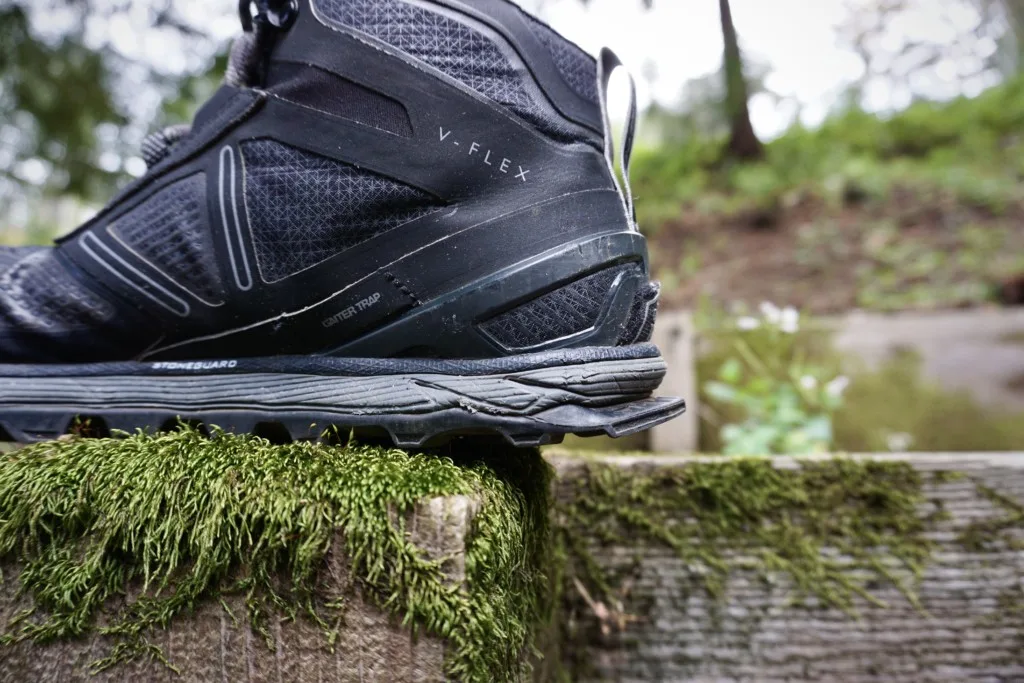
The back edge of the sole has a little rubber lip.
I’m sure Altra has some intentional reason for designing the shoe this way. But an unintended consequence is that sand and dirt can get caught on the lip and then catapulted up into the heel of the shoe. This is honestly pretty annoying.
They have designed the shoe to work in tandem with gaiters, but for anyone not wearing gaiters, it’s an issue. Wearing pants does fix the problem, but I do the majority of my hiking in shorts, so it’s not a total fix.
Adjusting to Zero Drop
There are times when the Zero-Drop causes me to have sore calf muscles. The change of gait from a heel-strike to the more springy mid-foot strike is sometimes a challenge.
I will occasionally get sore calf muscles if I haven’t been using zero-drop for a while. Or if I’m over-emphasizing the mid-foot strike without letting my heels “kiss” the ground to allow the calves to unload for that split second.
This change is A LOT more noticeable with trail running versus hiking, but still something worth noting about Altras boots, even if you never go faster than walking speed.
What I Love | Altra Lone Peak 4 Mid RSM
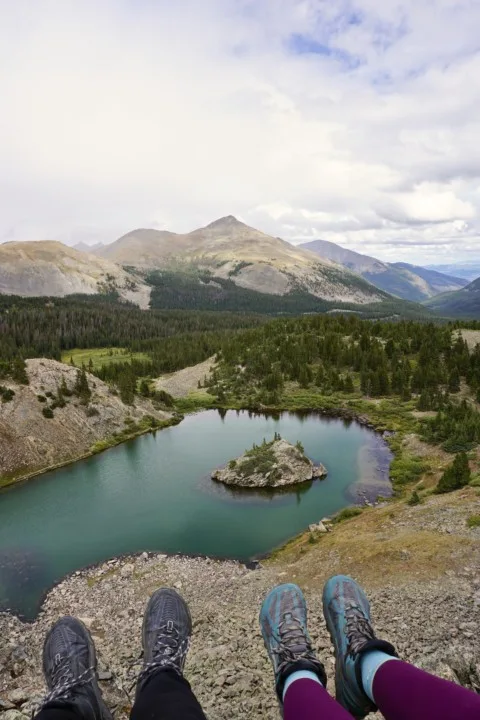
I personally love my Lone Peak 4 Mid RSM! My favorite way to describe them is a hiking boot that feels like wearing sneakers.
I used to dread the blisters and toe-bang that I would get from my old boots. But the Lone Peaks are so comfortable to hike in. I feel like they moved with my feet rather than fighting them.
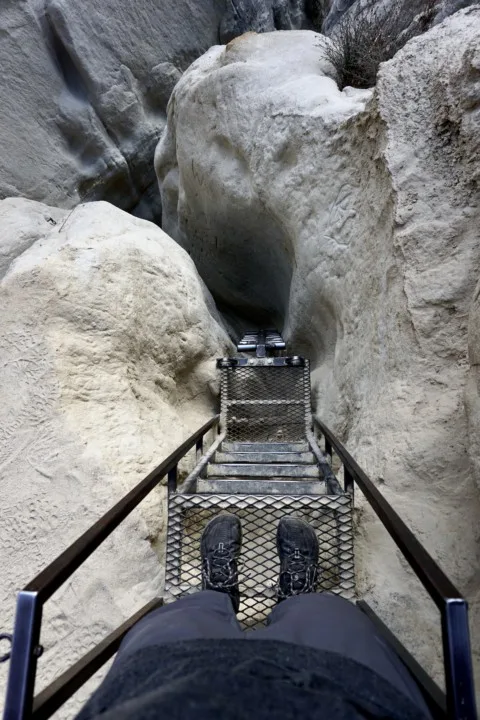
The only downsides are the occasional foot soreness or fatigue that I get from hiking rough terrain, and the durability when compared to a traditional hiking boot.
But, less durability is an acceptable trade-off for such a light boot. And foot soreness tends to subside after a few hours, where as blisters can last for days.
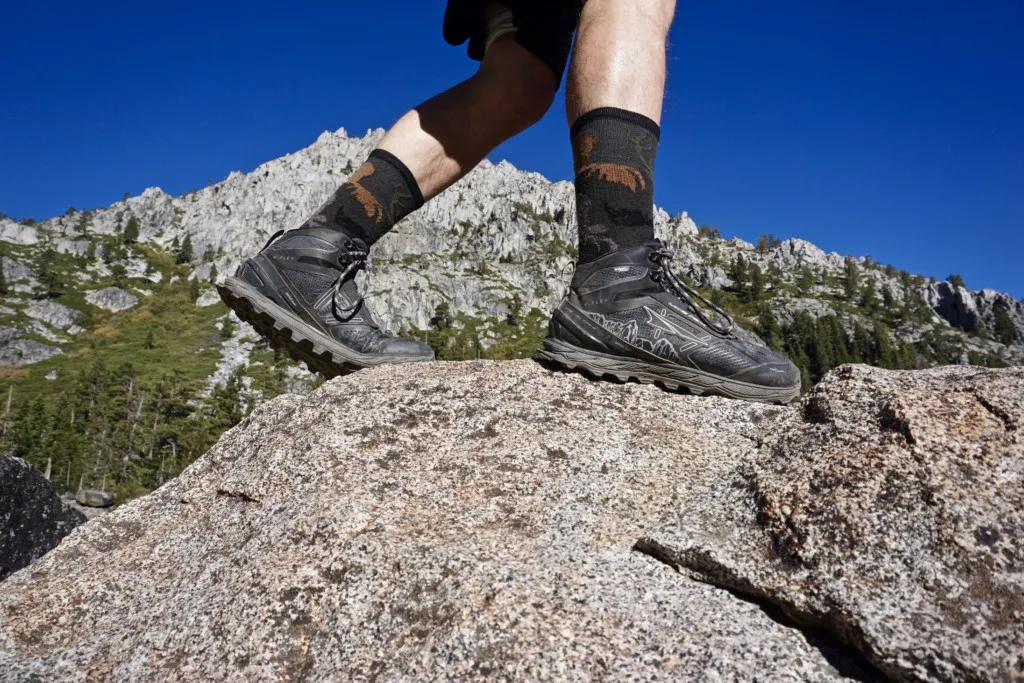
I am somewhat of a wide-toe box fanboy, and the natural toe splay narrative really resonates with me. So I suppose you could say I’m biased there.
But when every pair of traditional sneakers I own eventually rips open near my pinky toes, I’m pretty convinced that the traditional toe-box shape just isn’t right for me.
So despite a few quirks, these boots are a huge success. I find them to be an ideal compromise between weight, comfort, and durability.
Check Price on REI: Men’s | Women’s
Check Price on Amazon: Men’s | Women’s
Are the Altra Lone Peak’s not exactly what your looking for? Consider checking out our in-depth review of the Lem’s Outlander. A similar style shoe with a few different features.
Save This ‘Gear Review: Altra Lone Peak 4 Mid RSM’ For Later
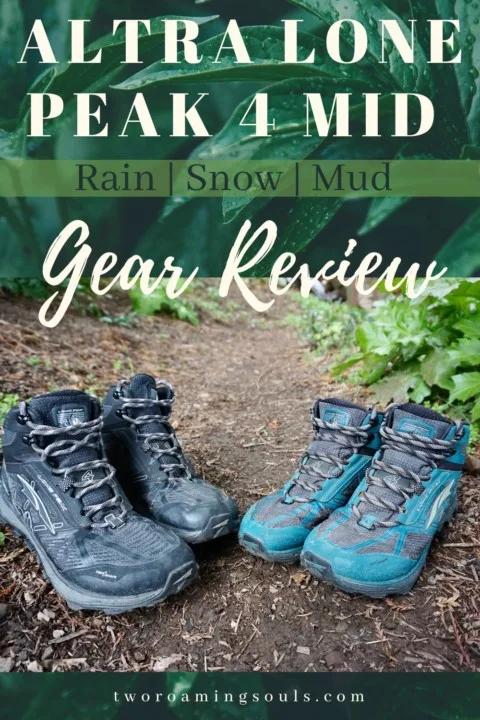
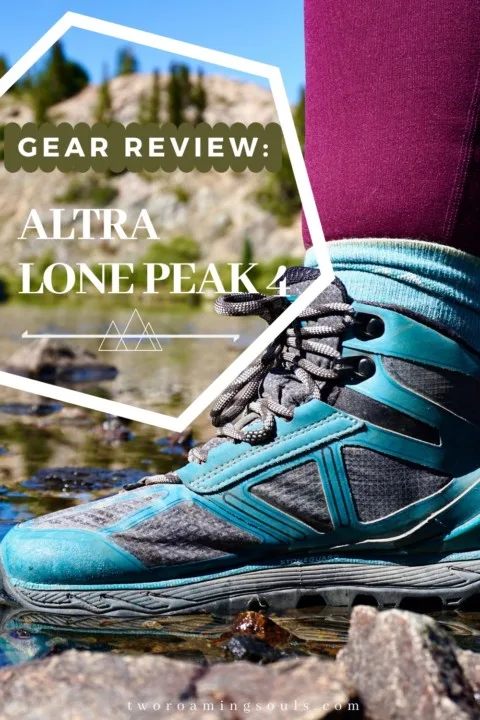

Top 5 Best Hikes In Vail, Colorado - tworoamingsouls
Thursday 6th of April 2023
[…] are, well, rocky. And as are many of the trails, so for your feet its best to have a quality pair of hiking footwear to tackle the best hikes in Vail. And many people really appreciate having trekking poles […]
Best Hikes in Kauai (Including Epic Viewpoints) - tworoamingsouls
Sunday 12th of March 2023
[…] is wet and the trails can be very muddy. It’s best to have a pair of good hiking shoes for on land and a good pair of river hiking shoes for crossing […]
Kalalau Trail | Backpacking The NaPali Coast In Kauai - tworoamingsouls
Saturday 7th of January 2023
[…] This should go without saying, but bring footwear with excellent traction. Something with deep lugs that provides good grip on muddy trails. Your life might literally depend on it. (Read our gear review on the Altra Lone Peak RSM) […]
Backpacking Lake Charles & Mystic Island Lake | Eagle, CO - tworoamingsouls
Monday 8th of August 2022
[…] the trail. And a good pair of hiking shoes is a must, such as the Altra Lone Peaks. (Here is our full review on the Altra Lone Peak hiking […]
Waihee Ridge Trail | Gorgeous Ridgeline Hike In Maui - tworoamingsouls
Sunday 14th of November 2021
[…] most important items to bring on Waihee Ridge Trail are water and good hiking footwear. More specifically, footwear with good traction because the trail is often muddy. Especially on […]